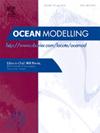Despite tremendous progress in algorithm development, computational efficiency and transition into operations over the past two decades, coastal modeling still lacks scientific rigor due to proliferation of many ‘gray’ areas related to various modeling choices made by modelers. In this paper, we propose some guiding principles for the modeling community to improve performance, and we also debunk commonly held myths that make the coastal modeling lack rigor. Using our own experience in developing seamless cross-scale unstructured-grid based models for the past two decades, we describe in unprecedented detail the end-to-end modeling process (i.e., from digital elevation models (DEMs) to mesh generation to post analysis), and demonstrate that defensible modeling is within reach for any end user by following three guiding principles: (1) Bathymetry is a first order forcing in coastal domains and thus should be respected in all aspects of modeling; (2) Oceanographic processes are driven across multiple spatial scales and so models should enable appropriate resolution as needed; and (3) Model assessment should focus on physical processes. Through qualitative and quantitative model assessments, we demonstrate the fundamental role played by bathymetry/topography as embedded in DEMs in making the results defensible, which is unfortunately glossed over in many modeling studies. Focusing on process-based assessment simplifies the calibration process. A major conclusion of this work is that model developers and operators should maximize the scientific rigor for in silico oceanography by avoiding some common pitfalls that rely on error compensation at the expense of representation of physical system processes. We present some best practice procedures for defensive and trustworthy numerical modeling.


